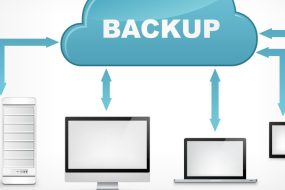
In today’s interconnected world, the development and deployment of cloud-based applications have become ubiquitous. As businesses and individuals rely more on the cloud, security concerns have taken center stage. With cyber threats constantly evolving, it’s imperative to ensure that your cloud-based applications are built with robust security measures. In this comprehensive guide, we’ll delve into the best practices and tools for secure cloud development, equipping you with the knowledge and tools to create safe and resilient applications.
Understanding the Importance of Cloud Security
Before we dive into the best practices and tools, let’s grasp the significance of cloud security. The digital landscape is fraught with vulnerabilities, making it crucial to protect your cloud-based applications against data breaches, cyberattacks, and other security threats. Securing your cloud development is not an option; it’s a necessity.
The Main Focus: Cloud Security
Cloud security is the cornerstone of our discussion, ensuring your apps are protected from potential threats and vulnerabilities. Let’s explore the best ways to make your cloud development secure.
Best Practices for Secure Cloud Development
Building secure cloud applications requires a proactive approach. Here are some best practices to follow:
Strong Access Control
Implement robust access control mechanisms to restrict unauthorized access to your applications. Use multi-factor authentication (MFA), role-based access control (RBAC), and regular access reviews.
Encryption
Encrypt data both in transit and at rest. Utilize strong encryption algorithms to safeguard sensitive information from prying eyes.
Regular Updates and Patch Management
Keep your cloud infrastructure and applications up-to-date by promptly applying security patches and updates. Vulnerabilities in outdated software can be exploited by attackers.
Security Testing
Conduct thorough security testing, including vulnerability scanning, penetration testing, and code review, to identify and rectify weaknesses.
Compliance with Industry Standards
Adhere to industry-specific security standards and regulations, such as GDPR, HIPAA, or ISO 27001, to ensure legal compliance and data protection.
Disaster Recovery and Data Backup
Prepare for the worst by having a robust disaster recovery plan and regular data backups to ensure business continuity.
Security Training
Educate your development and operational teams on security best practices and keep them updated on emerging threats.
Secure API Management
If your application uses APIs, ensure they are securely managed and authenticated to prevent unauthorized access.
Incident Response Plan
Develop a comprehensive incident response plan that outlines the steps to be taken in the event of a security breach.
Logging and Monitoring
Implement real-time monitoring and logging to detect and respond to security incidents promptly.
Essential Tools for Secure Cloud Development
To assist you in achieving secure cloud development, here are some valuable tools:
AWS Identity and Access Management (IAM)
For Amazon Web Services (AWS) users, IAM provides robust access control, allowing you to manage user permissions effectively.
HashiCorp Vault
HashiCorp Vault is a powerful tool for managing secrets and protecting data encryption keys.
OWASP ZAP
The OWASP Zed Attack Proxy (ZAP) is an open-source security tool for finding vulnerabilities in web applications.
Security Information and Event Management (SIEM) Solutions
SIEM solutions like Splunk and Elasticsearch can help you monitor and respond to security events effectively.
Cloud Access Security Brokers (CASB)
CASBs like Bitglass and Netskope provide visibility and control over cloud applications, securing your data in the cloud.
Final Words
In the realm of cloud development, security is paramount. As the digital landscape evolves, so do cyber threats. By following best practices and leveraging the right tools, you can build safe and resilient cloud applications. Stay proactive, stay informed, and stay secure.
Commonly Asked Questions
1. What are the main threats to cloud security?
The main threats to cloud security include data breaches, DDoS attacks, insider threats, and misconfigured security settings. Implementing strong security measures and staying informed about emerging threats is crucial.
2. How can I ensure compliance with data protection regulations in cloud development?
To ensure compliance with data protection regulations, identify the specific regulations that apply to your industry, implement necessary security controls, conduct regular audits, and keep records of data processing activities.
3. What is the role of encryption in cloud security?
Encryption plays a vital role in cloud security by protecting data from unauthorized access. It ensures that even if data is compromised, it remains unreadable without the encryption keys.
4. What is the importance of incident response planning in cloud security?
Incident response planning is essential because it outlines the steps to be taken in the event of a security breach. A well-prepared incident response plan can minimize damage and downtime.
5. How can I ensure the security of third-party cloud services and APIs?
To ensure the security of third-party cloud services and APIs, conduct thorough security assessments, validate their security measures, and monitor their activity for any anomalies.
Advertisement







